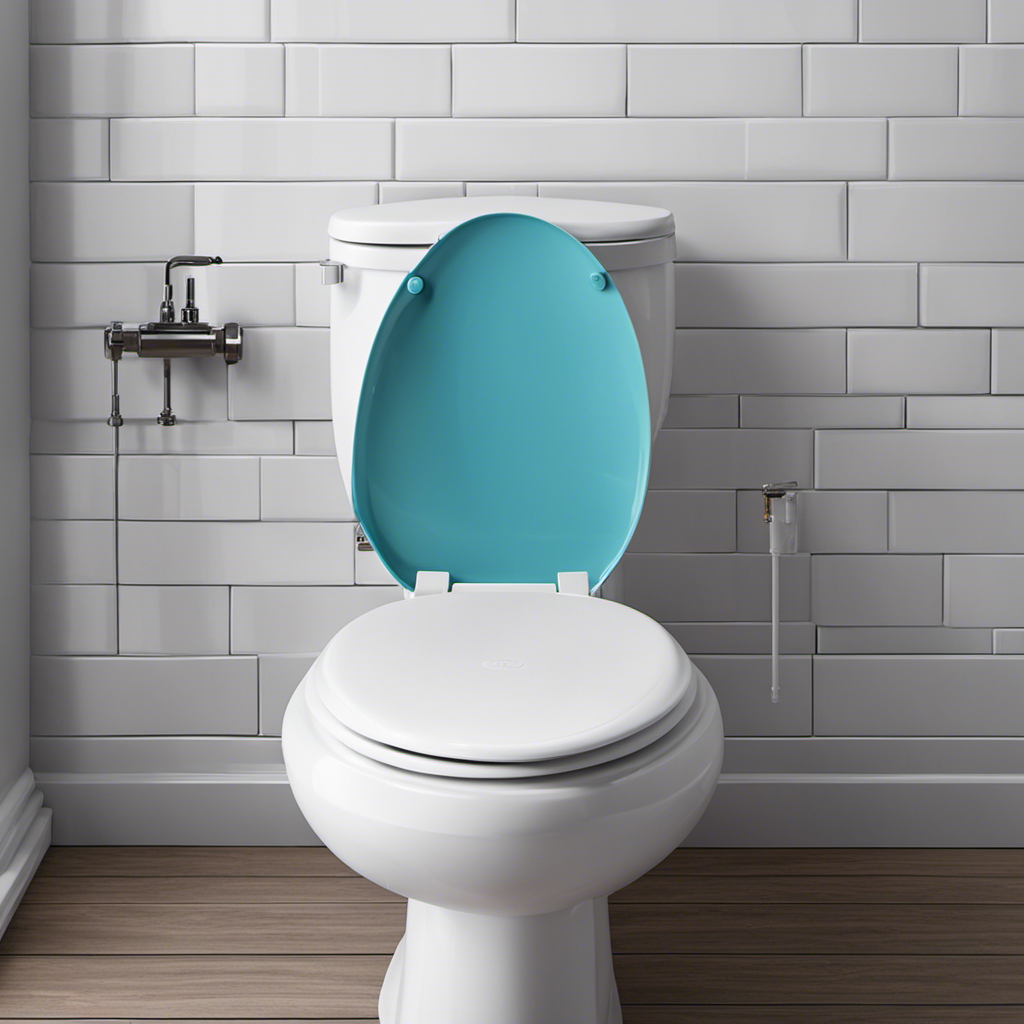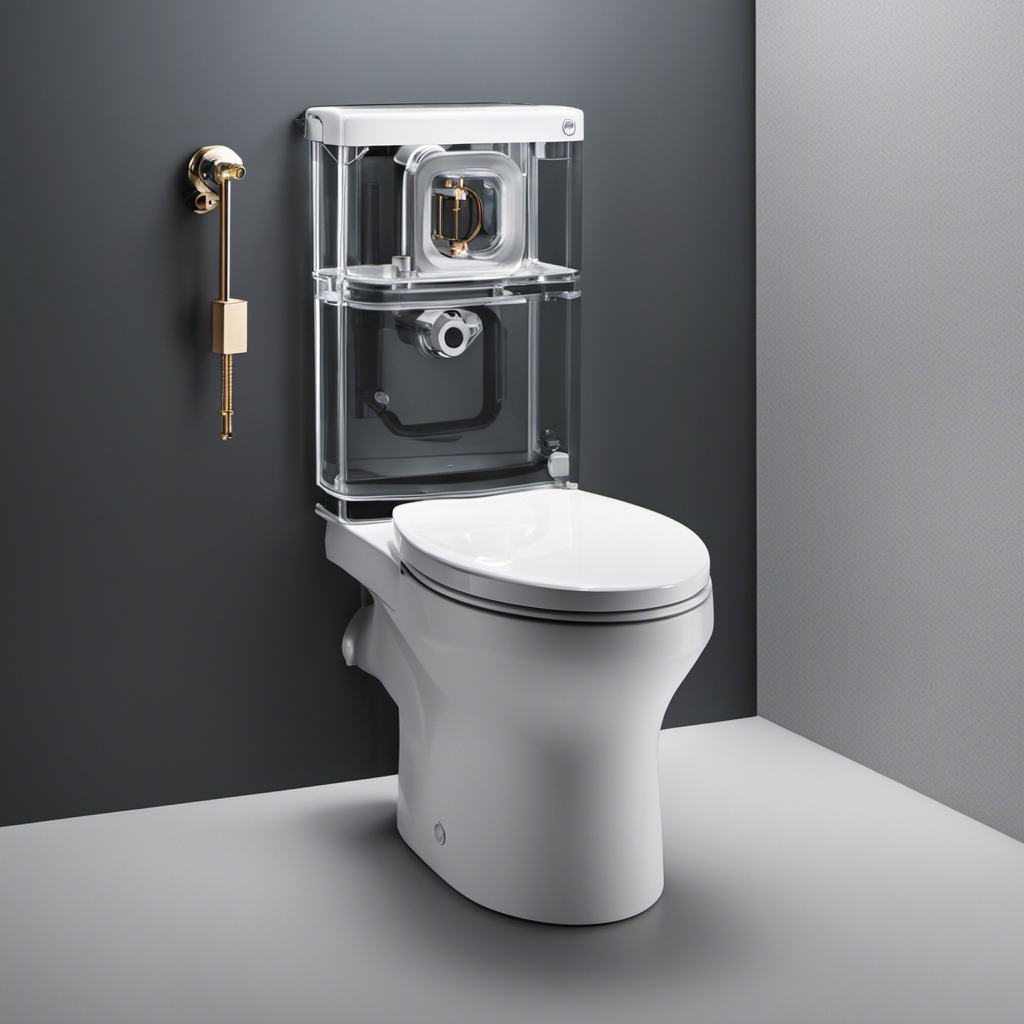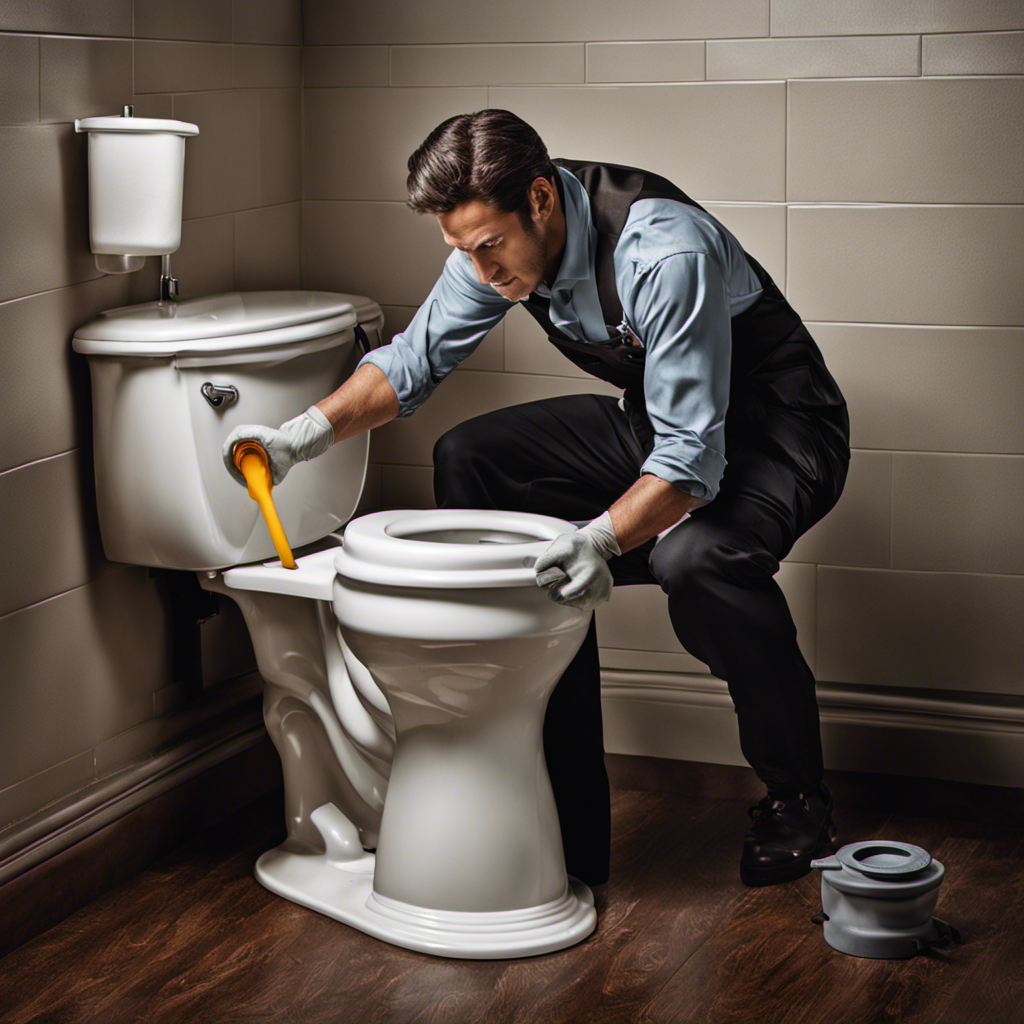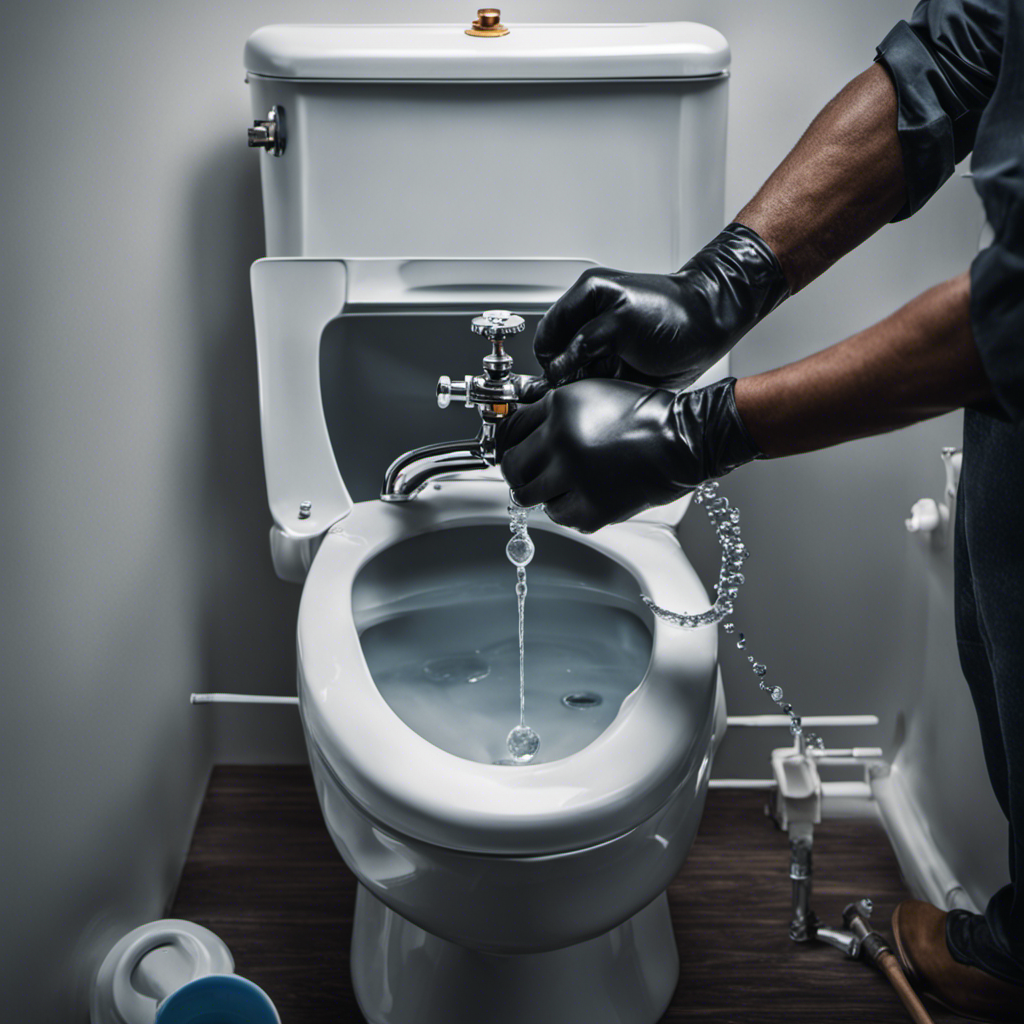Have you ever wondered why your toilet seems to take ages to fill up? Well, I’ve got some answers for you.
In this article, we’ll explore the potential causes of slow toilet filling and how you can improve its speed. We’ll dive into the workings of the water supply system and uncover common issues with the toilet fill valve.
So, if you’re tired of waiting around for your toilet to fill, stick around and let’s solve this problem together.
Key Takeaways
- Potential causes of slow toilet filling include low toilet water pressure, small toilet tank size, faulty fill valve, and clogged fill tube.
- Understanding the water supply system is essential as water pressure, flow restrictions, and fill valve problems can affect the fill speed.
- Common toilet fill valve issues include worn-out or faulty valves, which can be resolved with DIY solutions or by replacing components.
- To improve toilet fill speed, check the water supply valve, clean the fill valve, adjust the float level, and consider installing a pressure booster if necessary.
Potential Causes of Slow Toilet Filling
There are several potential reasons why your toilet takes so long to fill.
One possible cause could be low toilet water pressure. If the water pressure in your plumbing system is low, it can result in a slow filling toilet.
Another factor to consider is the size of your toilet tank. If your toilet tank is small, it may not hold enough water to fill the bowl quickly. This can lead to a longer filling time.
Additionally, a faulty fill valve or a clogged fill tube can also contribute to a slow filling toilet.
It is important to address these issues promptly to ensure proper functioning of your toilet and avoid any inconvenience.
Understanding the Water Supply System
The water supply system is responsible for the length of time it takes for my toilet to refill. Understanding how this system works can help explain the factors that affect the water pressure and flow in your toilet.
Here are some key points to consider:
-
Water pressure: The pressure of the water in the supply lines affects how quickly water can flow into your toilet tank. Low water pressure can cause slower refilling times.
-
Water flow restrictions: Any obstructions or blockages in the water supply line can restrict the flow of water. This can lead to slower filling times.
-
Valve issues: Problems with the fill valve, such as a worn-out or faulty valve, can also affect the speed at which water enters the toilet tank.
-
Plumbing system design: The layout and design of your plumbing system can impact water pressure and flow. Older or poorly designed systems may result in slower filling times.
-
Water supply demand: The overall demand for water in your area can influence the water pressure available. During peak usage periods, the water pressure may be lower, leading to slower refilling times.
Understanding these factors can help you troubleshoot and address any issues that may be causing your toilet to take longer to fill.
Common Toilet Fill Valve Issues
One common issue with toilet fill valves is a worn-out or faulty valve that affects the speed of water entering the tank. This can cause the toilet to take longer to fill up, resulting in frustration and inconvenience. Luckily, there are DIY toilet filling solutions that can help resolve this problem. Before attempting any repairs, it is important to understand the basics of a toilet fill valve. Here is a table outlining the different components of a typical toilet fill valve:
| Component | Description |
|---|---|
| Float | Determines the water level in the tank |
| Fill Tube | Supplies water from the valve to the tank |
| Valve Seal | Controls the flow of water into the tank |
| Diaphragm | Regulates the water pressure within the valve |
Toilet fill valve repair can involve replacing any of these components if they are worn out or malfunctioning. However, it is recommended to consult a professional plumber if you are unsure about performing the repairs yourself.
How to Improve Toilet Fill Speed
If your toilet is taking a while to fill up, you can try adjusting the float to increase the speed of water entering the tank. Here are some steps you can take to improve the fill speed of your toilet:
-
Check the water supply valve: Make sure the valve is fully open to allow maximum water flow.
-
Clean the fill valve: Sediment and debris can build up in the fill valve, causing it to slow down. Remove the fill valve cap and clean it thoroughly.
-
Adjust the float level: If the float is set too low, it may not allow enough water into the tank. Adjust it so that it sits higher.
-
Consider a toilet fill valve replacement: If none of the above steps work, it may be time to replace the fill valve altogether.
-
Increasing water pressure: If your home has low water pressure, consider installing a pressure booster to improve the fill speed.
Troubleshooting Slow Toilet Filling Problems
To troubleshoot slow toilet filling problems, you may need to check the water supply valve and clean the fill valve.
It’s important to perform regular toilet tank maintenance to ensure proper functioning. One common issue that can cause slow filling is a faulty float valve. Signs of a faulty float valve include a constantly running toilet or a toilet that only fills up partially.
To check the water supply valve, turn it off and then back on to ensure it is fully open. Cleaning the fill valve involves removing any debris or mineral buildup that may be obstructing the flow of water.
Conclusion
In conclusion, if your toilet takes too long to fill, there might be a multitude of reasons causing this inconvenience.
Understand the water supply system and check for common fill valve issues such as blockages or worn-out parts.
Improving the toilet fill speed can be achieved by adjusting the float or replacing the fill valve altogether.
Troubleshooting slow toilet filling problems requires patience and a systematic approach.
Remember, rectifying this issue will result in a rapid and refreshing refill, bringing relaxation to your restroom routine!










